Constraints
Edge-to-edge display, device thickness, battery drain and creating a 360 degree hinge that clicks in place.
Result
Filed for patents
Challenge
Balance larger screen sizes, with in-hand comfort.
(In 2012/13 when the iPhone 5 and 5s came out).
Teammates
Jarret Cauchy (mechatronics engineer who had previously worked on the iPhone 5C and 5S)
The Spark: Upon seeing flexible screens I came to the realization, we can split the screen from the rest of the hardware. Based on this, I quickly came up with an idea for a smartwatch. The initial concept was to spread the computing power behind the wrist. After 10 minutes, I had made a handful of prototypes out of nothing more than paper and tape. I tested them out and quickly learnt that it was too uncomfortable to have hardware behind the wrist (especially when working at a computer). I disproved the viability of the concept, but now I was in the zone.
Prototype simulates expandable screen
The Watch: I wondered how a watch could completely replace your phone. Well, it'd have to be able to detach from your wrist and it'd need the ability to increase in screen size. After being satisfied with the feel of some paper prototypes I moved on to creating versions out of duct tape and business cards and attached them to my wrist. This worked well because instead of making a ton of prototypes to find the appropriate size, I made one I could easily adjust, simply by sliding in one more business card at a time. I printed out some screens, taped them on and showed the concept to people. After seeing this, I learned that people wanted a phone that could increase in screen size. However, they would never wear it as a watch.
This is when I pivoted to designing a phone.
Since, cameras are the thickest component, I tried a deep header.
A Foldable Phone: Getting the entire device to be truly flexible (rather than just the screen) was a long way from being economically viable (at the price point the market needs). Even if it comes faster than I predicted the non-flexible device would still be cheaper as it was built on technology already being used at mass in the market. Therefore, I believed it was more of a design challenge then a pure technology challenge.
A hinge mechanism clicks side panels behind center screen enabling edge to edge display.
The Constraints: Armed with this belief, I moved on to creating higher quality prototypes out of cardboard that would try to solve some of the fundamental challenges. These include: edge to edge display, device thickness, battery drain and a 360 degree hinge mechanism. While simultaneously trying to nail the user experience. I was designing for the technology of the future which meant researching and learning about many diverse future technologies way before they came to market.
Dissecting Devices: Since I was a kid, I've always loved taking electronics apart and putting them back together. So it was a no brainer to me. In order to design a phone, I'd have to take apart and analyze other phones along with many other contraptions. I took apart (and often reassembled), phones, cameras, computers, watches, toys, anything with interesting mechanisms I could learn from. I researched how these items were built as I wanted to understand the manufacturing constraints.
I came up with a three panelled device, targeted at phablet users. When unfolded, the screen is similar to a 10" tablet.
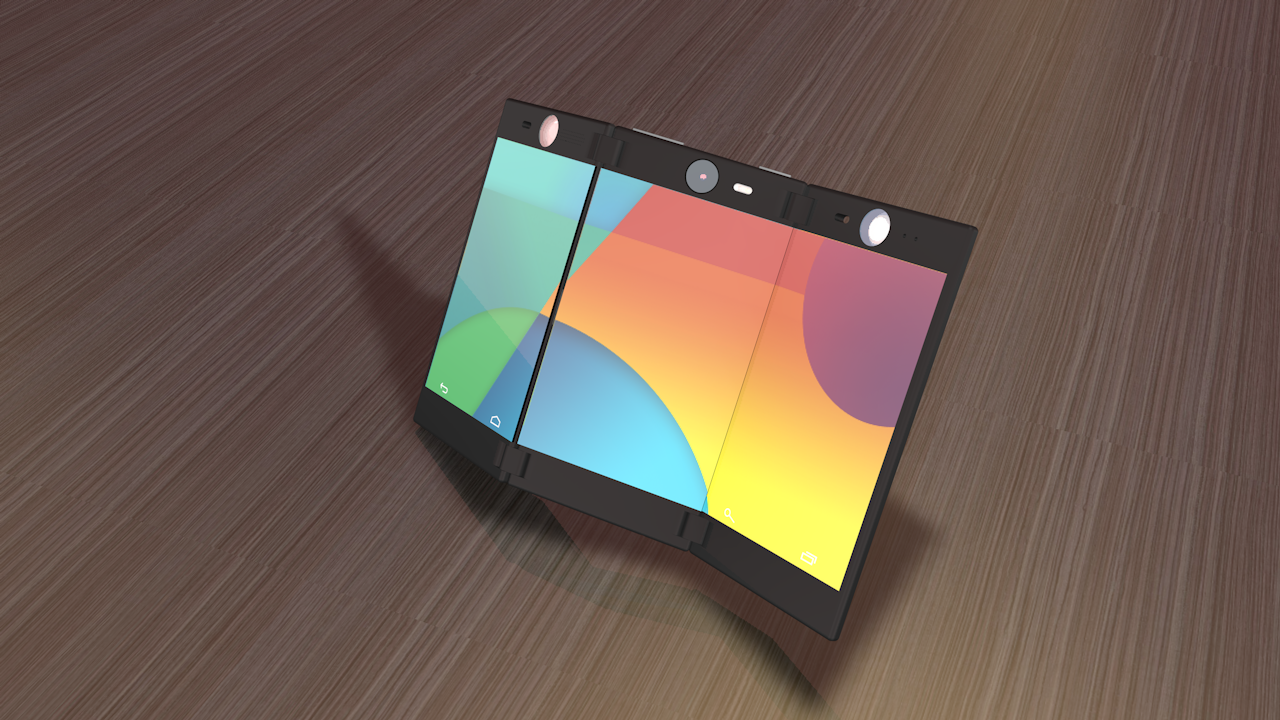
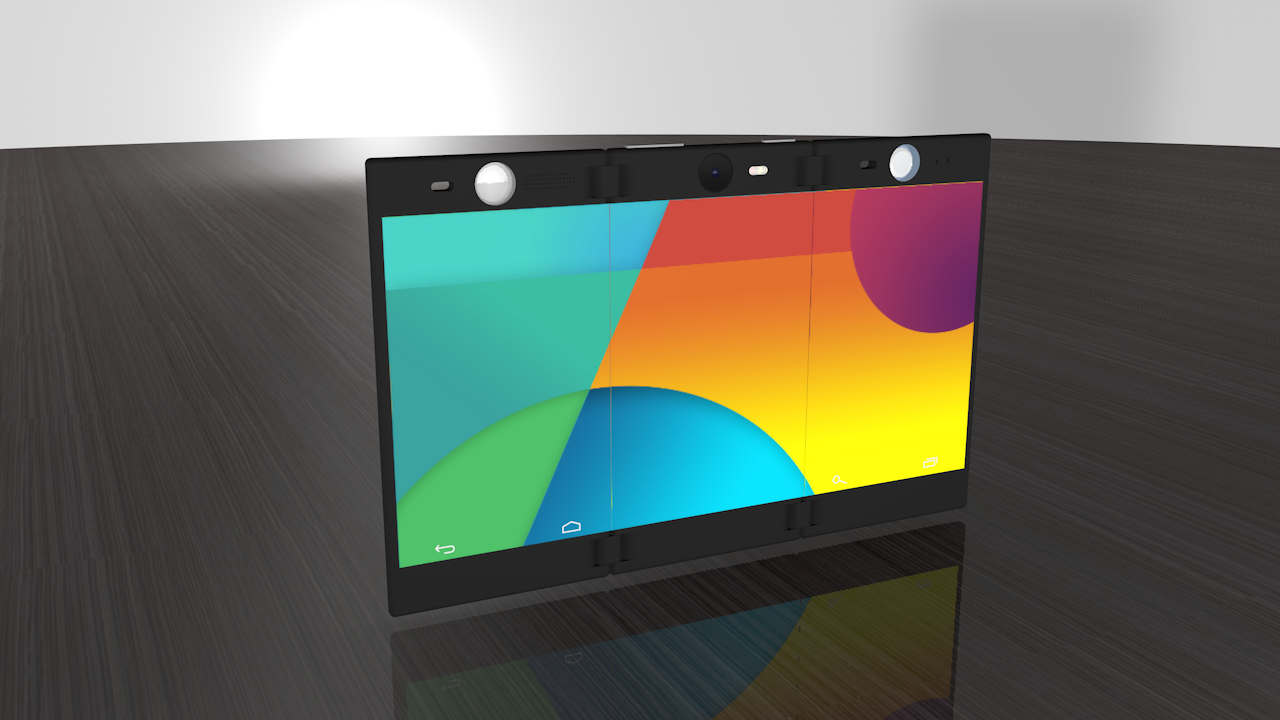

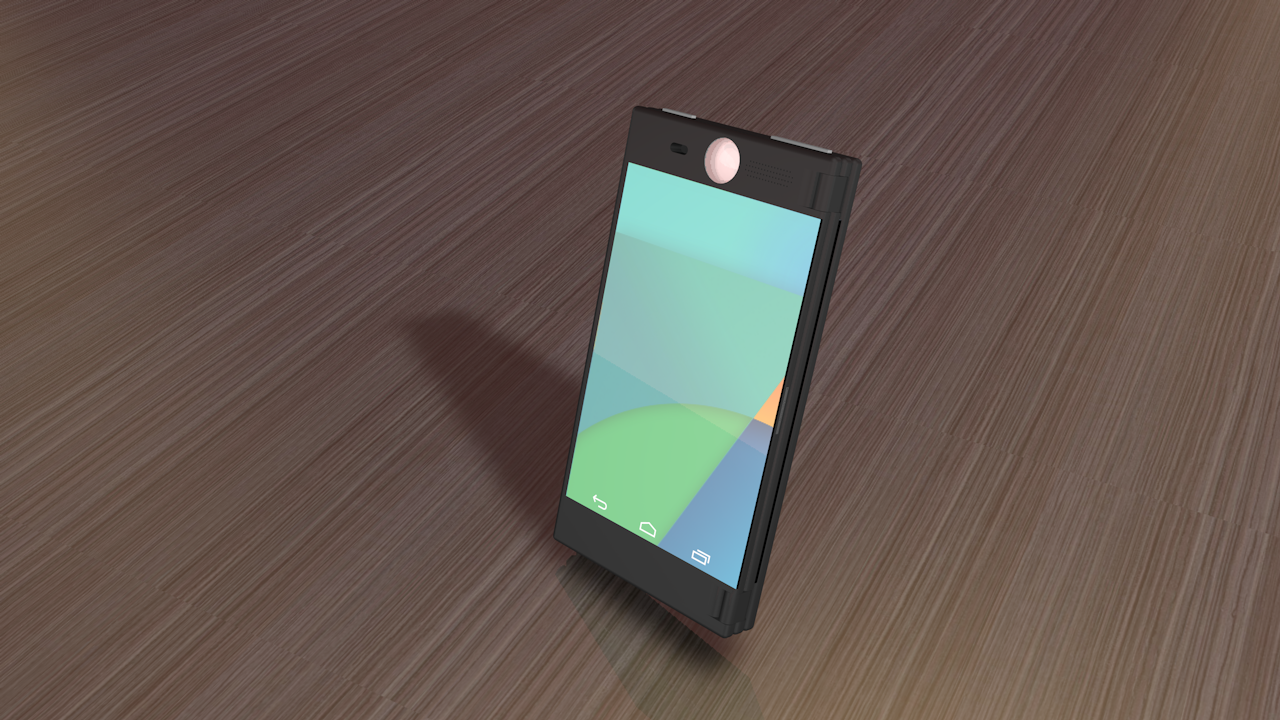

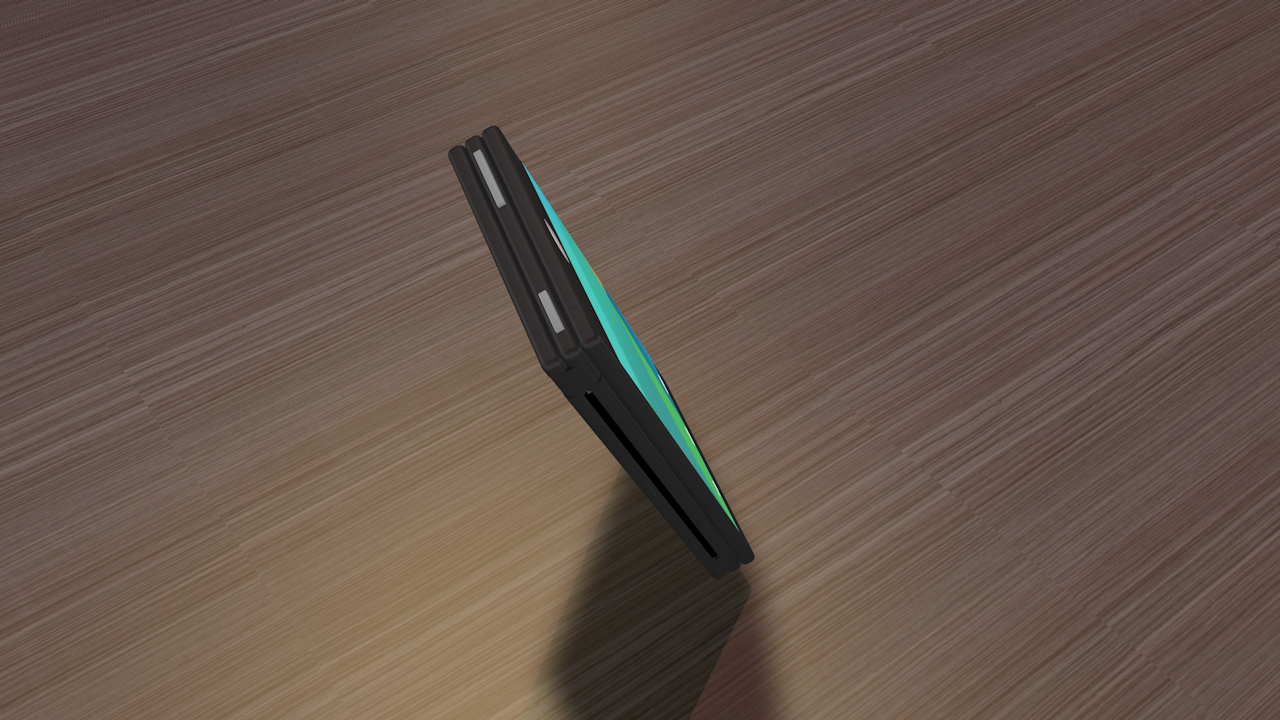
New Use Cases: There are many experiences that this new form factor enhances over existing devices. For example, have you ever had to crowd around looking over someone's shoulder to get a glimpse at some shared video. Well now you could simply share the video in two opposing directions. Games present an interesting opportunity where multiple players could play simultaneously (e.g. battle ships). When taking a picture, both the photographer and the subject can see what the picture will look like as it's taken. There are many more of these new use cases.
Getting To Simplicity: Putting the 3D printed device with different screen mock ups into people's hands made it feel much more real then any rendering could have ever done. Despite coming up with the two panel device, I was initially apposed to it over the three. Unfolding to the size of an iPad, did a better job of grabbing peoples attention and initial desire. However, putting them both in people's hands, getting them to play with it showed just how much people preferred the two panelled device. I could have never learnt this from showing images. Once I learned this, I uncovered many more benefits of the two panelled device.
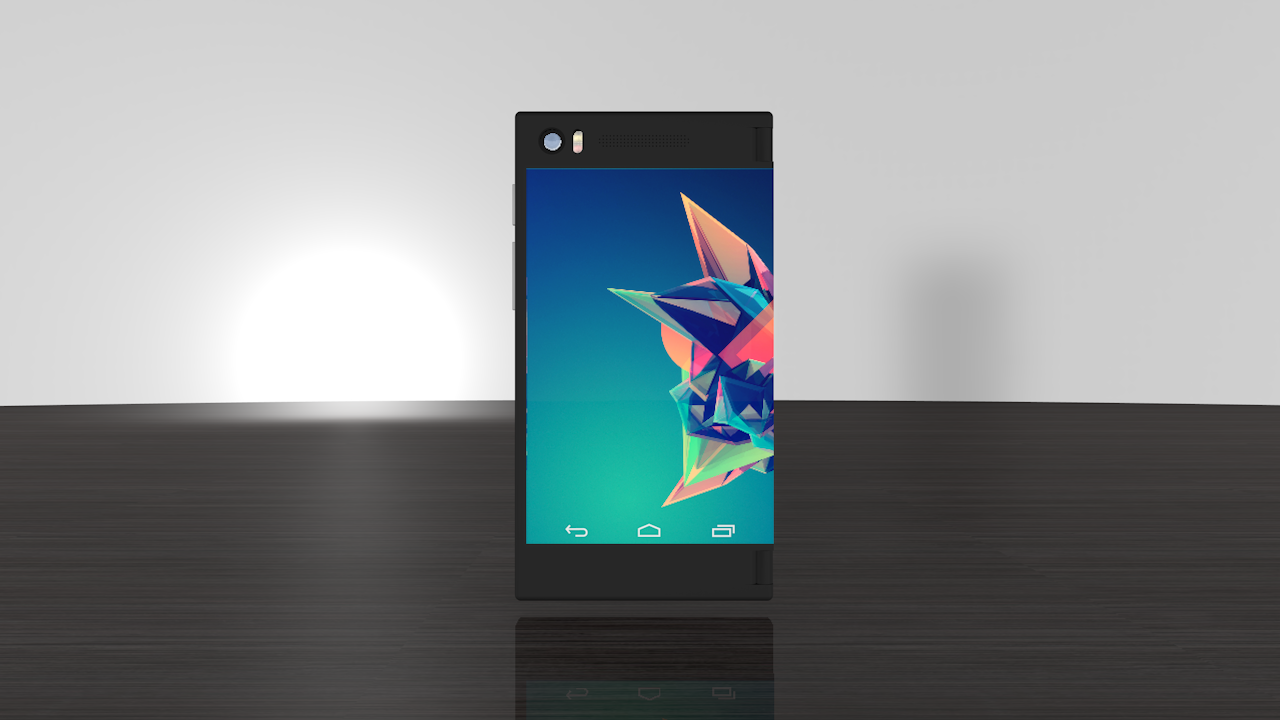
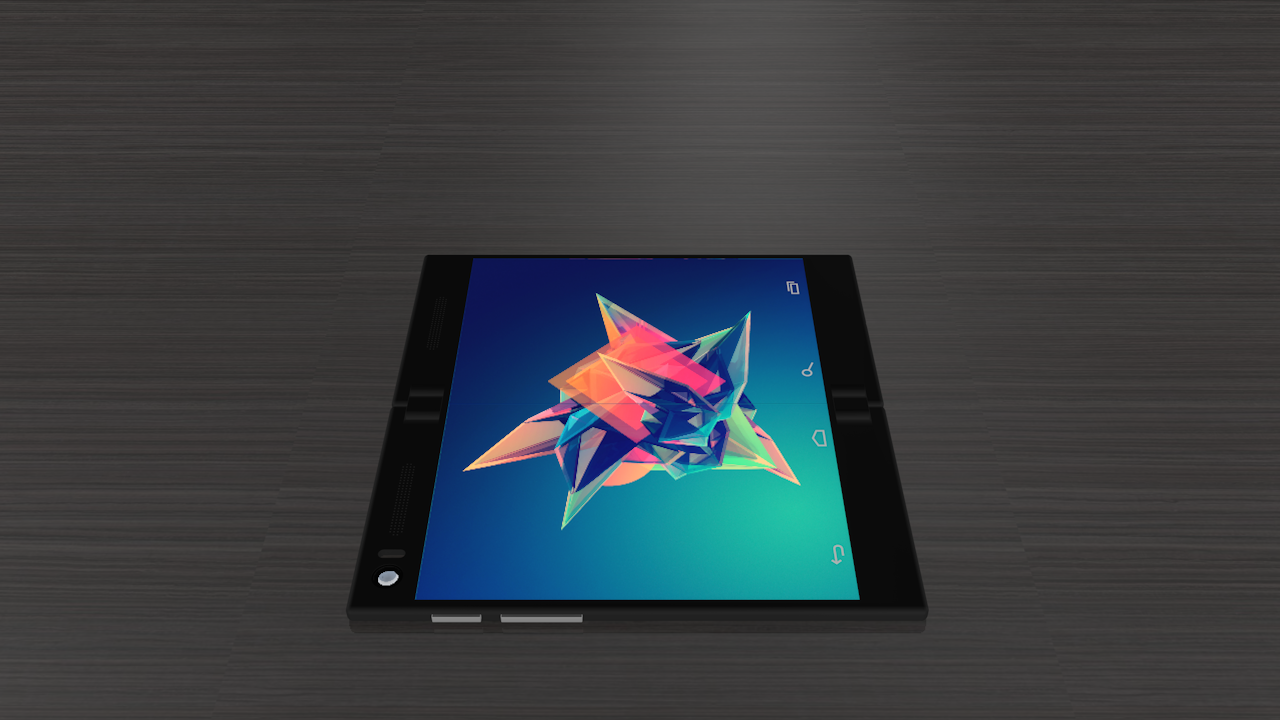


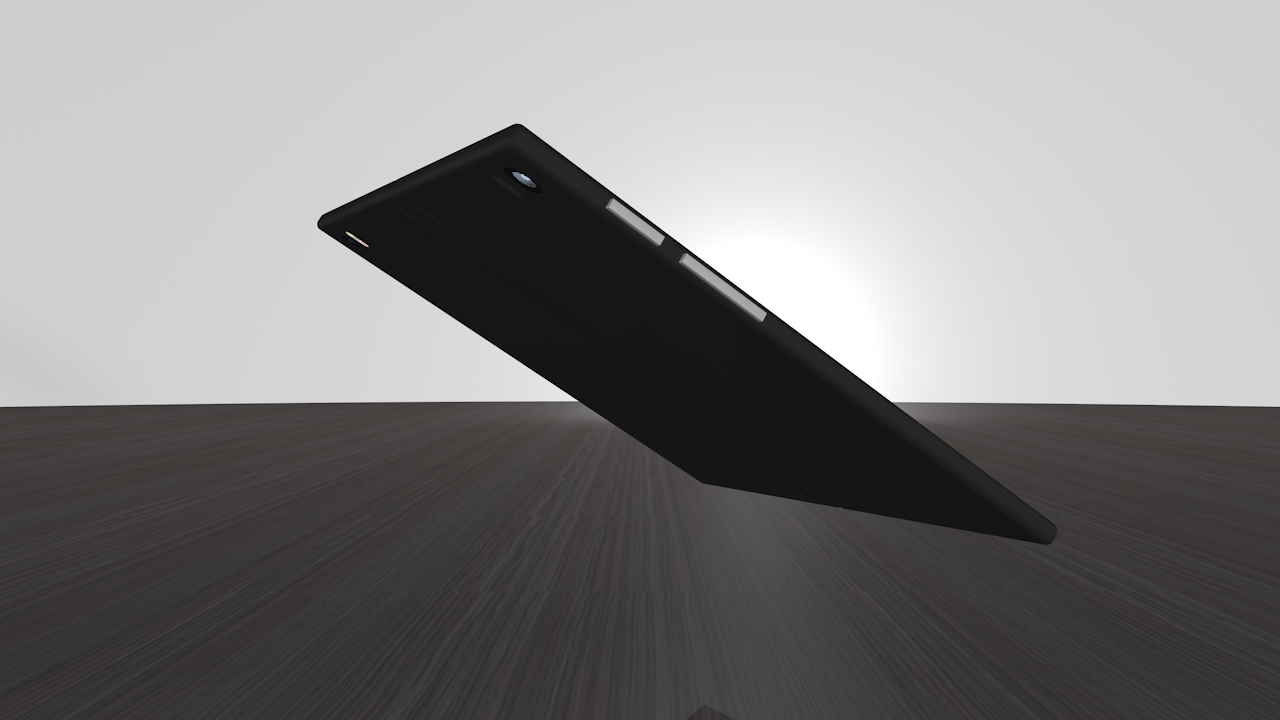
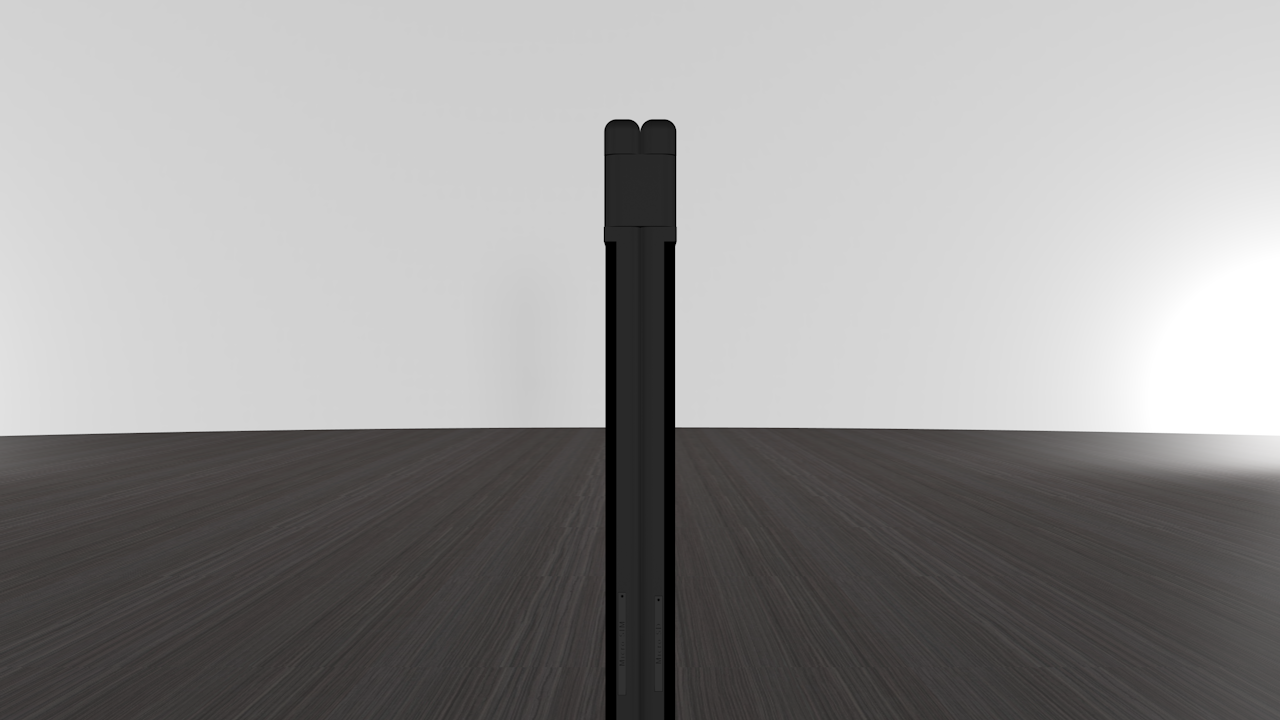
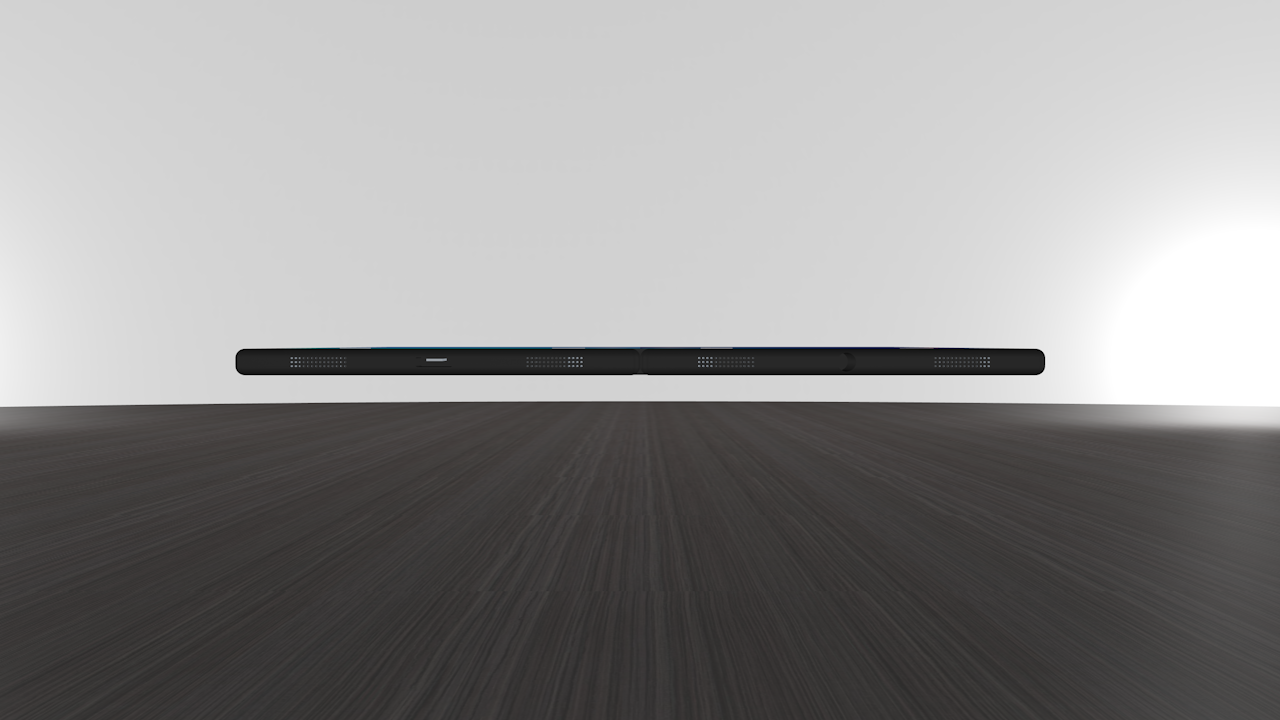
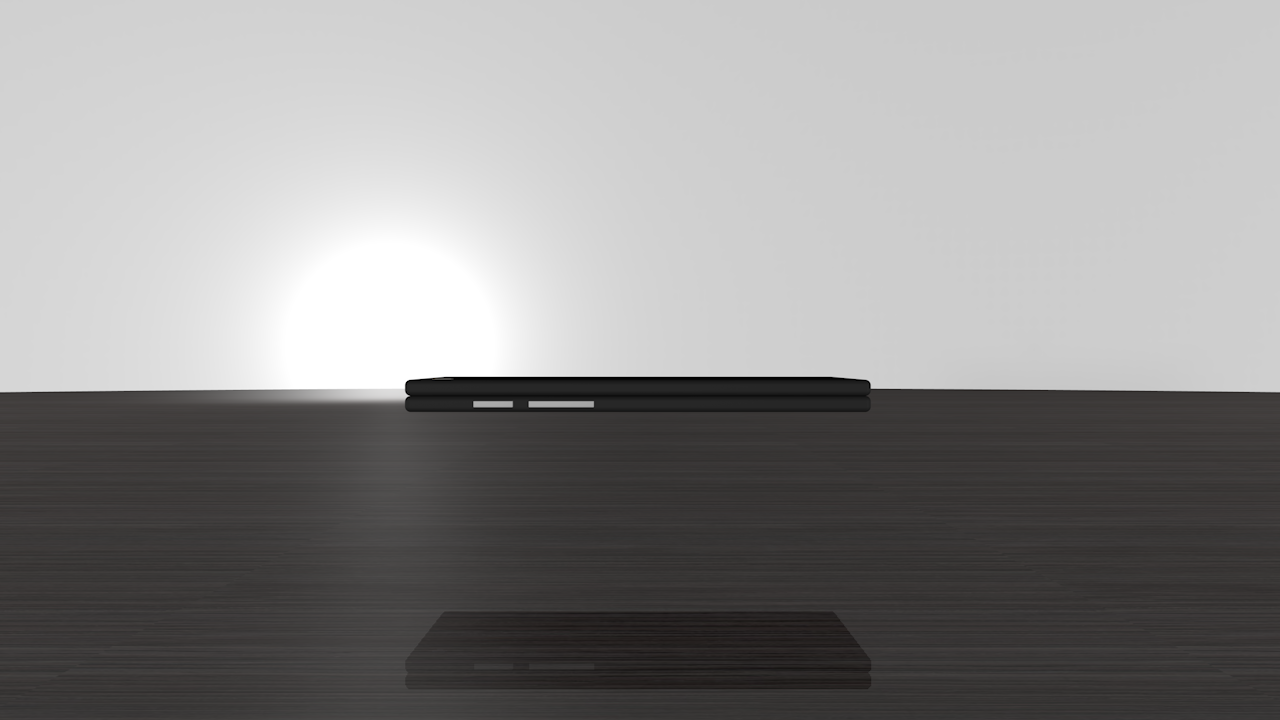
This device has three modes:
Phone Mode - When the device is folded to have a screen facing both directions. Using pre-existing software the device can detect which screen the user is looking at and only this display will be used. However, an app can activate both screens.
Display Mode - The device is unfolded to have the two screens flush together (our hinge clicks into place when flush), acting as one larger screen. The larger combined screen can be utilized for reading a novel, watching a movie or many other activities. When unfolded the screen dimensions are close to a 7 inch tablet (or iPad mini).
Shell Mode - When folded, to have both screens facing inwards, the device is in a more durable position. This is because only the metal back of each panel is exposed. This durable shell mode can be useful for many activities where the phone might be damaged (e.g. biking) or simply to avoid scratching the screen (e.g. loose in a purse).
Larger Lessons
Often the larger lessons sound obvious and if you asked me beforehand I might have said I already knew some of these lessons. However, it's one thing to understand a concept, at a high level, it's an entirely different matter to put it in to practice.
Test with less: if you think you’re being scrappy and testing with the bare minimums, you can probably still cut.
Nothing compares to having it in your hands: things always seem simpler in your head, on paper, or on the screen. You likely won't notice many of the breaking points until you actually have a prototype in your hands. So do whatever you can to speed up the time between thought and in-hand prototype.
"The art of simplicity is a puzzle of complexity" - D.Horton. Most people take for granted simple products, never wondering how hard it was to get them there. Getting to simplicity is deeply challenging. This project has deepened my appreciation for simple products, and my curiosity to understand what it took to get them there.
Venture developed in 2013 i.e. started when iPhone 5 (4 inch display) was latest iPhone.
Not shown here is the internal mechanical and electrical engineering (e.g. actual hinge).
*Patents Pending

